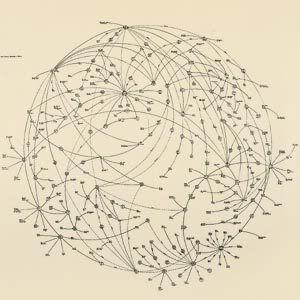
"Landfill" (2000) by Mark Dion
Wood, Celluclay, painted backdrop (by Sean Foley), taxidermied animals, garbage, paint.
71.5 x 147.5 x 64 inches
Based on the systems of landfills set-up across the globe. "Landfill" is a life-size habitat display of a landfill. In this work, packaged in a shipping crate (commenting on the ability for this problem to be anywhere around the globe, making it a universal problem and commentary), a dog, a cat, rodents and birds scavenge a dump filled with trash relating to the animal kingdom - old bird feeders, leather shoes, and containers for products containing animals or using them as logos. Dion asks the viewers of his artwork to think about the relationship between humans and animals. He points out how humans can have a negative effect on the environment animals live in when they do not care for it properly.







